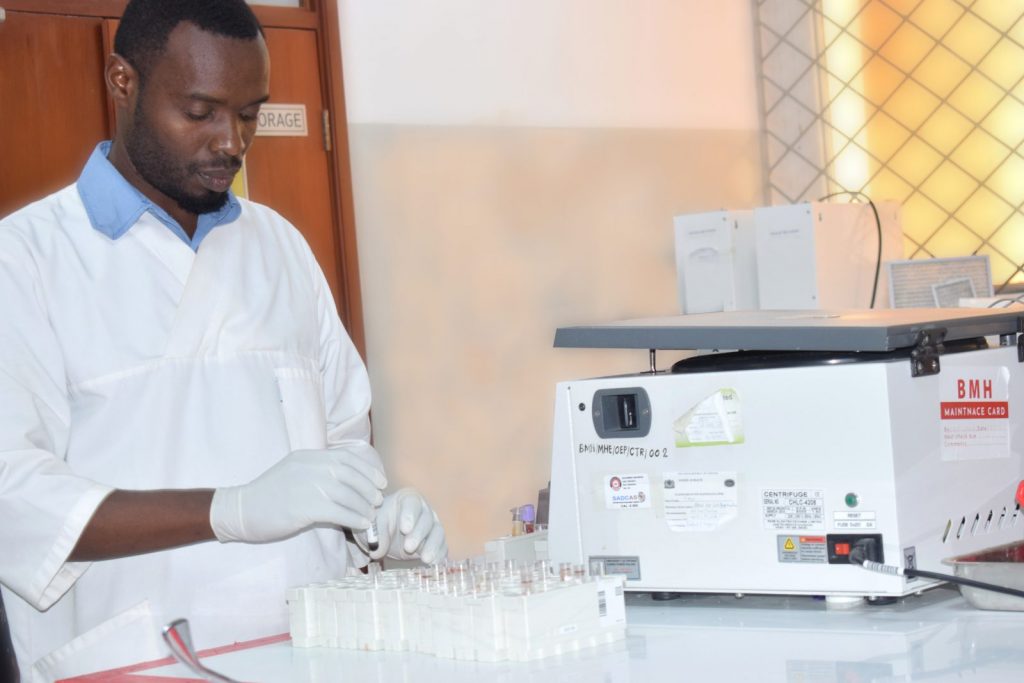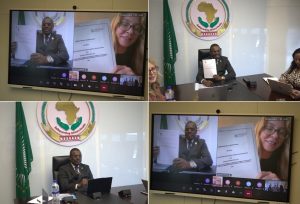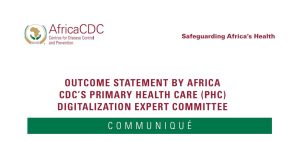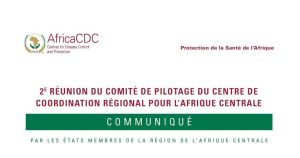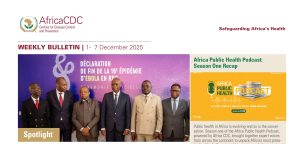Tanzania has reduced maternal mortality by 80% in a seven-year period, from 556 deaths per 100,000 live births in 2016 to 104 per 100,000 in 2022. The success is attributable to increased political commitment, an increased number of Emergency Obstetric and Newborn care (EmONC) facilities, a growing health workforce, a strengthened obstetric referral network, capacity building, mentorship, and the conduct of Maternal and Perinatal Death Reviews and Surveillance at all levels. It is a trend Tanzania intends to maintain while serving as a reference point for other African countries on how to achieve similar success.
“Tanzania has made significant progress in improving public health. Our focus on reducing maternal mortality has delivered remarkable results,” said President Samia Suluhu Hassan of Tanzania. “In the same period, we also achieved a significant reduction in under-five mortality.”
Africa accounted for 69% of global maternal deaths in 2020. Nevertheless, universal access to sexual and reproductive healthcare services in sub-Saharan Africa stands at just 28%. The major complications, which account for almost 75% of all maternal deaths, include obstetric haemorrhage, infection, and high blood pressure during pregnancy (pre-eclampsia and eclampsia).
Compared to 2017, in 2020 the maternal mortality ratio increased in 17 countries and decreased in 30. To stay on track to meet the Sustainable Development Goal (SDG) targets, the maternal mortality ratio (MMR) must decline by at least 20.3% each year from 2020 onward, requiring coordinated efforts.
With less than seven years to the end of the SDGs, Africa’s MMR stands at 542 per 100,000, compared to a global figure of 221 per 100,000, against the SDG target of 70 per 100,000 live births by 2030.
Before Tanzania’s health managers and planners could share their experience, they first showcased their work at a leadership training session on reproductive health and the exchange of good practices for 15 African Union Member States, organized by Africa CDC with partners, the WHO, UNFPA, Pathfinder International and Reproductive Health Supplies Coalition at its headquarters in Addis Ababa in August 2024.
Tanzania’s exemplary progress was recognized at the Addis Ababa meeting as a model for other African Union member states. Zambia, Lesotho, Egypt, Uganda, Chad, the Democratic Republic of Congo, Guinea, The Gambia, South Sudan, Somalia and Eswatini were the first to send representatives for a learning exchange in Tanzania’s capital, Dodoma, from December 3-7, 2024.
“During these presentations, Tanzania showcased its impressive achievements in combating maternal mortality, “said Secka. “They reduced maternal mortality by 80% in just seven years.”
Key interventions included expanding the number of Emergency Obstetric and Newborn Care (EmONC) centers from 106 in 2014 to 523 in 2023, exceeding the WHO requirement of one CEmONC center per 500,000 people. For an EmONC facility to qualify, it should be able to perform a total of nine signal functions that are essential to protect the life of a woman and her baby during pregnancy and delivery. Key indicators included institutional and skilled birth delivery rates, complication rates, caesarean section rates, and case fatality rate monitoring. Over 10,000 health facilities were constructed.
All this was steeped in a 25-year national development policy that ran from 2000-2025, and from this strategy, a five-year health sector plan was developed. Based on this plan, they were able to reduce deaths, and services became more accessible to people. Health personnel were empowered to conduct Maternal and Perinatal Death Reviews. This means every death was recorded and discussed in a Zoom meeting where everybody participated, including high authorities, to investigate the circumstances that led to the woman’s death. Recommendations would become action points for the future. The maternal health surveillance system operates at all levels—facility, regional, and national, he said.
“But for these initiatives to succeed, strong political commitment is essential. For instance, the President, a woman, personally texts regional governors, urging them to take action when maternal mortality rates are high,” said Secka.
Mentoring of doctors also helped. Senior gynecologists traveled twice a year to outlying communities to train young doctors and physician assistants for two weeks. The trainees were motivated to stay and work in the health centers.
A network of local taxi drivers acts as ‘taxi ambulances’ in areas where ambulances are rarely available, linked to detailed referral plans for every clinic and village. The system, known as m-mama, is an affordable emergency transport service that connects mothers and newborns to vital, life-saving healthcare in rural areas of Tanzania. The referral system—from health facilities to hospitals and from communities to health facilities—improved.
A Maternal and Perinatal Death Review, which is a national virtual meeting that involves all sectors, helped reduce mortality by at least 35%. Over a seven-year span, 708 maternal deaths were reviewed, and 120 perinatal deaths were scrutinized, and it was found that, in Tanzania, service availability was not an issue, but skills training needed attention. Two-thirds of maternal deaths were attributed to attitudes and practices. Leadership issues required strengthening. Communication through WhatsApp improved reproductive outcomes, and only 4.6% of cases that had serious complications and requested technical support through WhatsApp resulted in death.
Addressing the Gates Goalkeepers Award on February 5, Dr. Mpoki Ulisubisya, former Permanent Secretary of the Ministry of Health in Tanzania, said, “Because of the hard work Tanzania has done, more women and infants are alive today due to the care they are receiving.” He said that many rural areas of Tanzania previously lacked adequate facilities for women’s health. As a result, women had to travel long distances to access such services. Even when they did so, they were not guaranteed that the facilities were functional. “We sought funding to improve the situation, including building infrastructure.”Africa’s efforts to reduce maternal mortality have been ongoing for a long time. Africa CDC has performed well in disease preparedness and response, but in emergency and humanitarian situations, 60% of those affected are women and children. The Reproductive Health Unit under the Division of Disease Control and Prevention was established in 2021 to enhance response efforts and strengthen reproductive health epidemiology, said Ebba Secka, Senior Technical Officer for Reproductive Health in the Division of Sexual Reproductive, Maternal, Newborn, Child and Adolescent Health at the Centre for Primary Health Care, Africa CDC.
The Reproductive Health Unit’s first task was to develop the Reproductive Health Strategic Priorities (2022-2026) to support the accelerated implementation and monitoring of the Maputo Plan of Action (2016-2030). Secka said the plan was developed using process an evidence-based approach and was ultimately validated by 42 African Union Member States at the AU Head Quarters in Addis Ababa in May 2023, with the overall goal of improving maternal and reproductive health in Africa and contributing to the reduction of maternal mortality to less than 70 per 100,000 live births by 2030.
The five reproductive health strategic priorities are adolescent sexual and reproductive health, maternal and newborn health including family planning, prevention, and management of cancers of the reproductive system, reduction of gender-based violence (GBV) and safe abortion care.
The implementation of the strategy started in December 2023 with the training of healthcare professionals in Emergency Obstetric and Newborn Care (EmONC) Management for the 25 African Union Member States that recorded the highest maternal mortality rates. The training curriculum was developed by Africa CDC in collaboration with Liverpool School of Tropical Medicine and University of Kenya.
“The reality was Africa CDC could not train all 55 member states at once. Instead, we focused on the 25 countries with the highest mortality rates. However, during the training, we realised that constantly hiring external consultants and paying training materials was not sustainable,” said Secka.
“We needed a long-term solution, so we selected the best trainees from the 25 countries and trained them as trainers. We procured training materials and began cascading the training,” he explained.
The cascaded training started with the participation of 15 member states in the Eastern region in Mombasa, Kenya, last year. The trainingbuilt capacity professionals (doctors and mid wives) to effectively manage complications to reducematernal and newborn mortality
Tanzania was an eye-opener for African delegates. Member state participants were briefed by the Ministry of Health on key achievements in maternal and reproductive health.
A trip to Soya, an Emergency Obstetric and Newborn Care centre located 170 km from the capital Dodoma, provided delegates with a firsthand look at a facility in action. Another trip took them to blood transfusion services. They also participated virtually in a national Maternal and Perinatal Death Review.
“Tanzania is an exemplary case, demonstrating that achieving Universal Health Coverage for reproductive health is feasible even with limited resources, provided there is strong political will. This political commitment, evident from the highest levels of government to the grassroots, has been instrumental in driving their progress,” said Loguran Anthony, a Public Health Specialist from South Sudan.
Anthony said one of the most remarkable aspects he observed was Tanzania’s structural organization and the coordination mechanisms between the national and subnational levels. “Their approach ensures alignment in health priorities and efficient allocation of resources.” Additionally, their method of fund disbursement to support service delivery at all levels reflects a robust system that prioritizes accessibility and sustainability, he said. “Adopting or adapting these realities for member states will take time, but we will expose them to what is happening. When they go back to their own countries, we will want to see what they have done,” said Secka. The second leg of this learning exchange is already set for Rwanda soon, targeting nine countries. In the past, the training has involved the World Health Organization and UNICEF, among other organizations, but this time, Secka said they will work with the Institute for Health Metrics and Evaluation to expose member states to statistics in public health and how they can use them.

